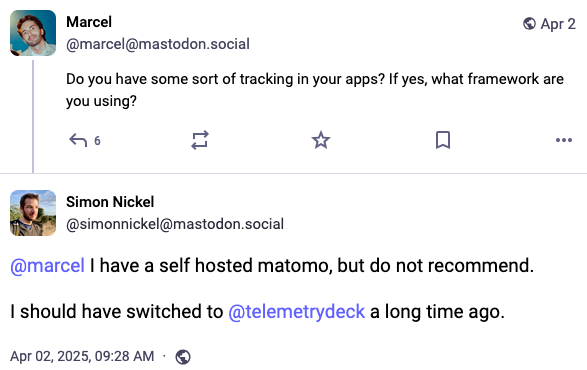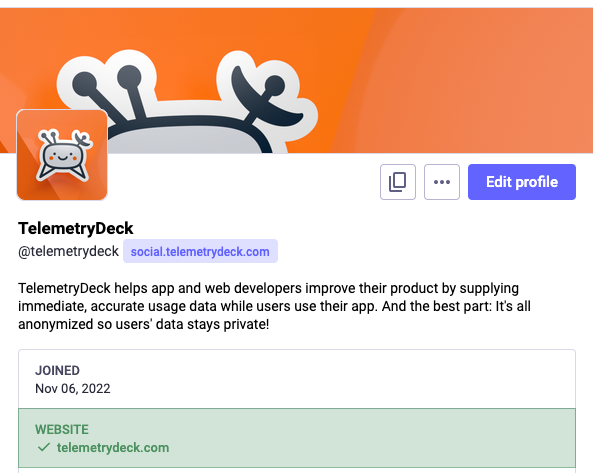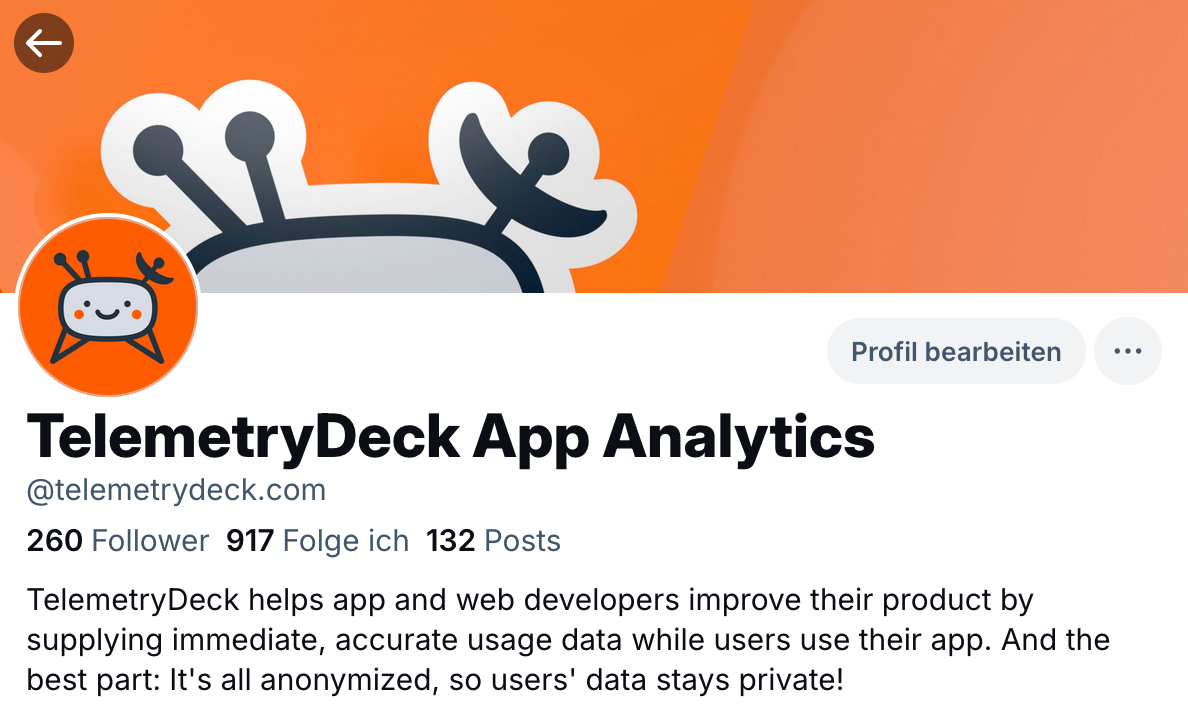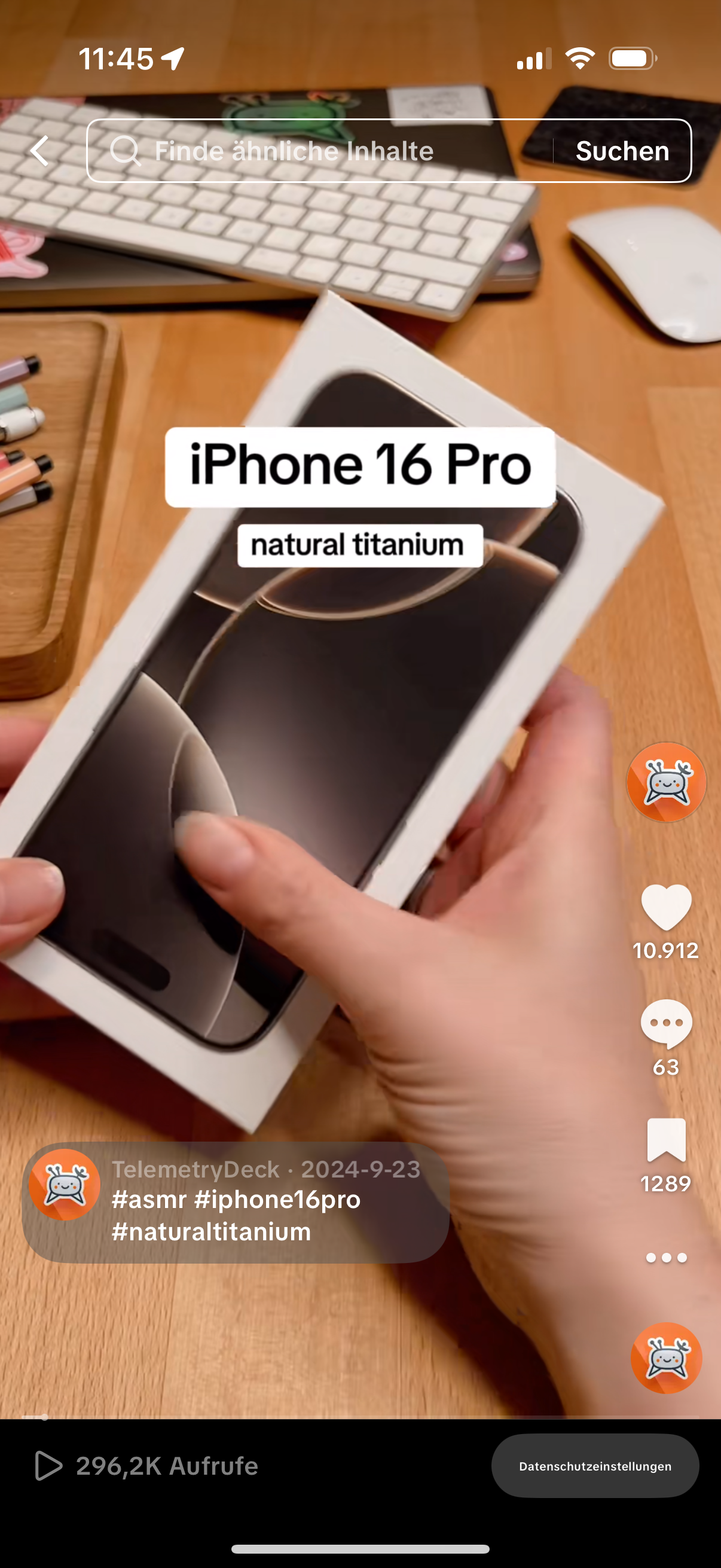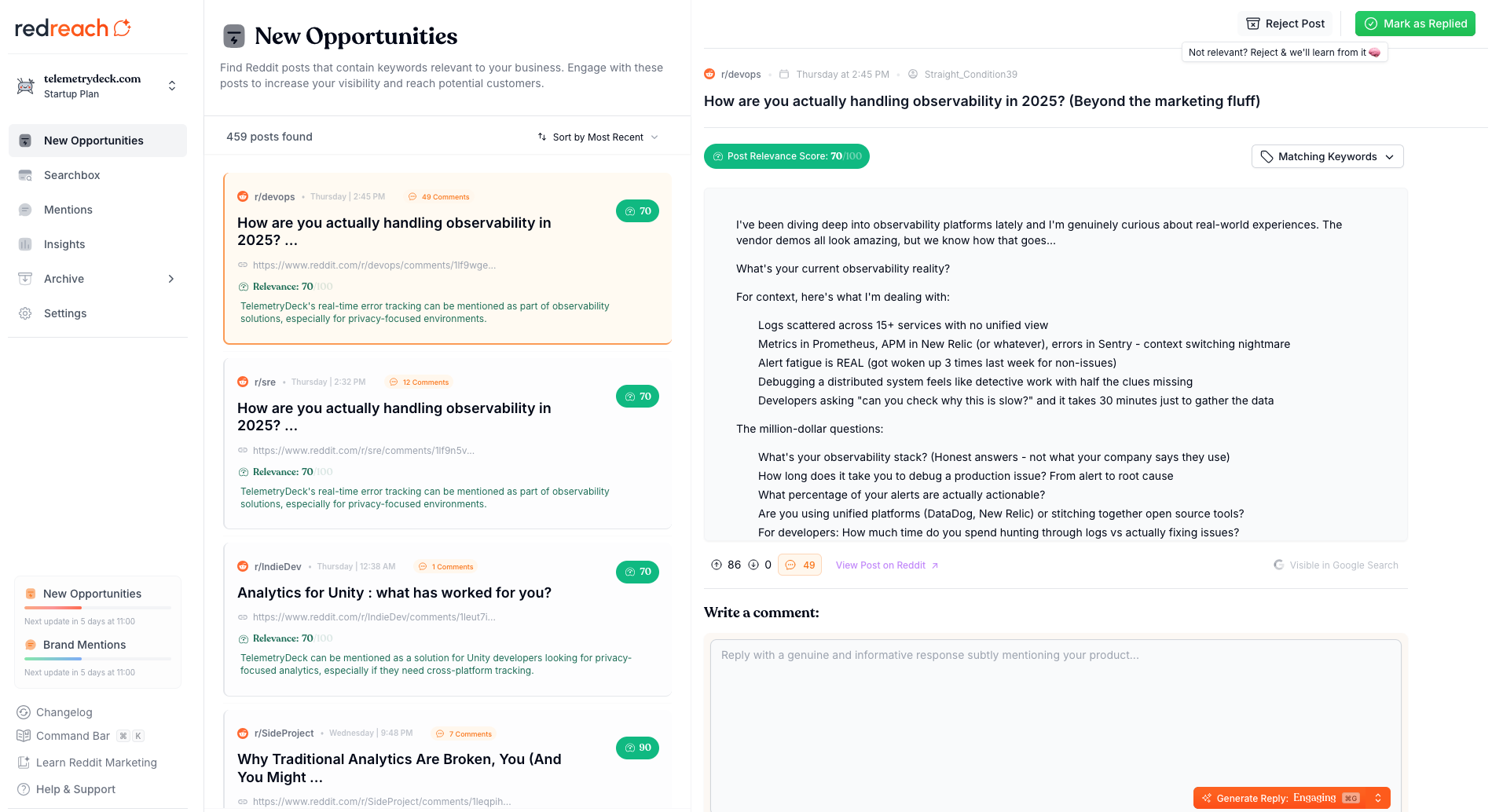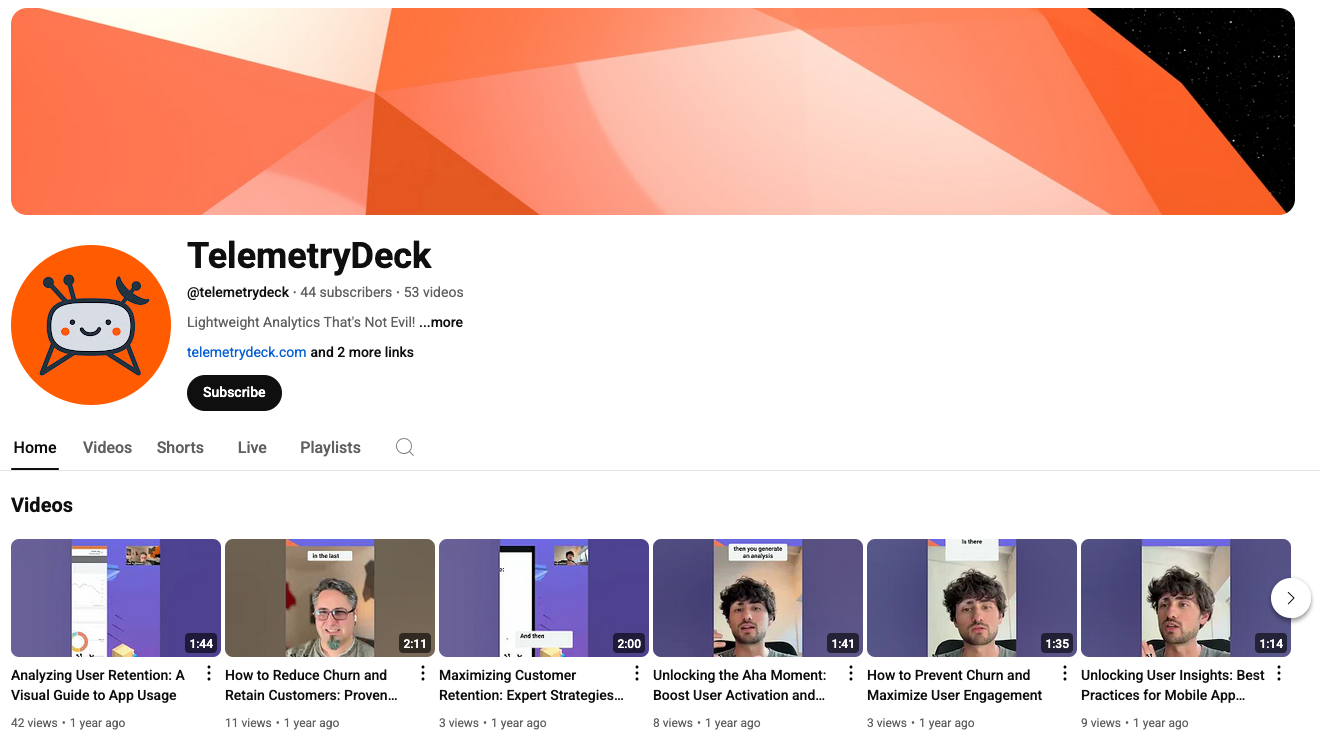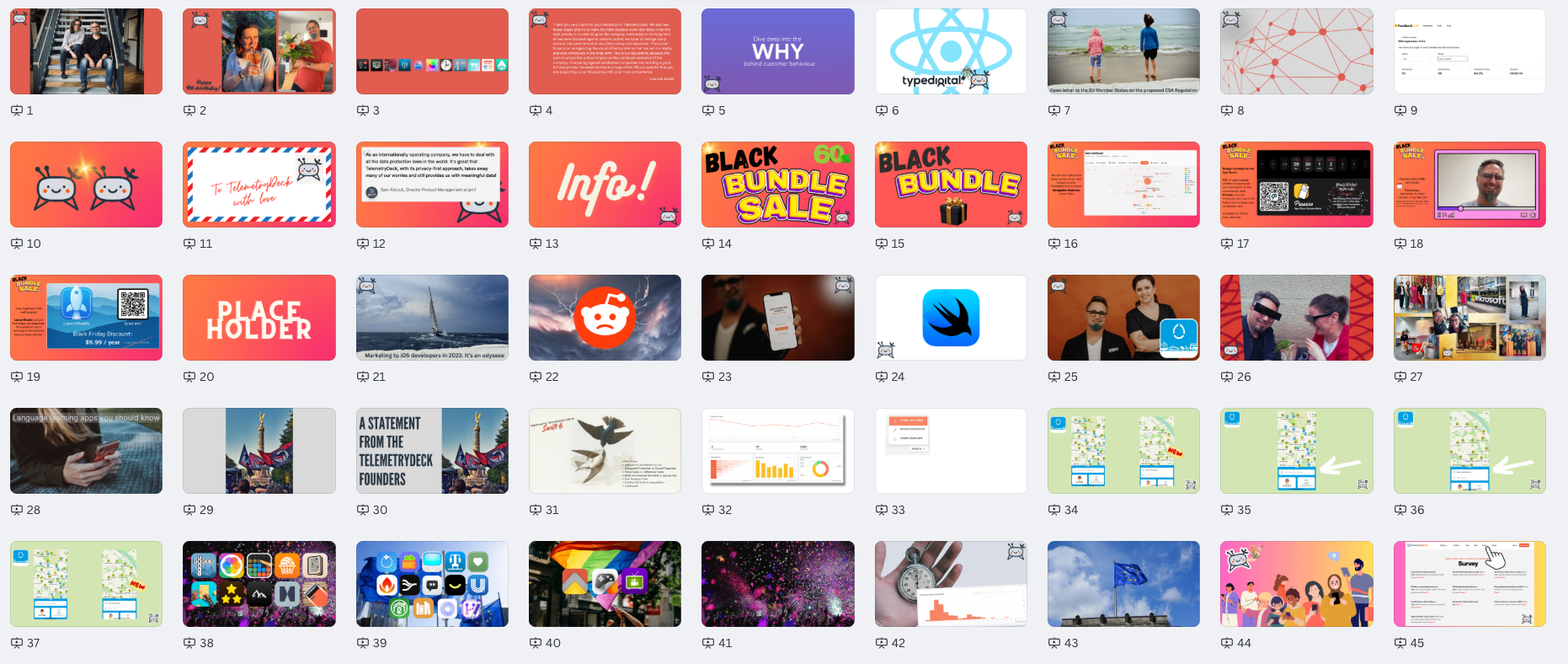The social media balancing act: Where we find our visitors
At TelemetryDeck, social media is a crucial part of our strategy to drive traffic to our site. However, it’s been a bit of a rollercoaster ride trying to navigate the various platforms.

From the long-standing powerhouses like Twitter, I mean X, to the up-and-coming contenders like Bluesky, we’ve seen both the benefits and the frustrations.
In this post, we take a closer look at which social networks bring us the most visitors, and how we’re adjusting our approach to each platform.
- Why are we on social media
- Mastodon: The optimistic corner of the internet
- Twitter: The necessary evil
- Bluesky: The promising quiet corner
- LinkedIn: Lisa's playground
- Instagram & TikTok: Video, but not enough
- Reddit: Our secret weapon
- YouTube: Will be revived soon
- Buffer: The unsung hero
- Canva: Where authenticity wins over perfection
- We want to get better
Why are we on social media
It may sound like a no-brainer that a company should be active on social media in 2025. But I don't think it is. We are a small team and have to use our resources wisely.
We reach our target audience, app developers, through social media. If you're reading this, you're probably one of them and can confirm that this is a well-connected, international community that exchanges ideas at conferences, in podcasts, via newsletters, and, of course, on social media. Most of the Indies speak English, and one thing they have in common is pride in their own apps.
Indie developers also have something else in common: they don't like advertising. Although that's putting it too simply. They do like advertising, but only if it means supporting someone who is an important part of the community through sponsorship. That's why advertising in podcasts, newsletters, and on specific websites has its place.
But what indie developers really like (according to our research) are recommendations and experience reports from other indie developers. These recommendations are shared via social media, among other places. We are regularly tagged in posts where someone answers the question, “Hey, what tool do you use for app analytics?” Of course, we want to appear with a well-maintained, useful account to make it as easy as possible for potential new customers to fall in love with TelemetryDeck.
Social media is not our only channel, but it is our most important one.
Mastodon: The optimistic corner of the internet
Mastodon has turned out to be a surprisingly good fit for us. Unlike other platforms, we’ve encountered an extremely modern, open-minded, and positive crowd.
Daniel feels right at home here, posting regularly on his private account. You'll find him here: https://social.telemetrydeck.com/@daniel.
The community is friendly, always willing to point out what we could do better, but in a constructive, “let's work together” kind of way. It’s refreshing. When we get a suggestion, it usually comes with a “we love your work” attached. It’s these small but meaningful exchanges that make Mastodon feel like a network we want to support for the long haul.
Looking at social networks alone, Mastodon sends us the most website visitors. Or, to put it another way: Mastodon followers are more likely to click.
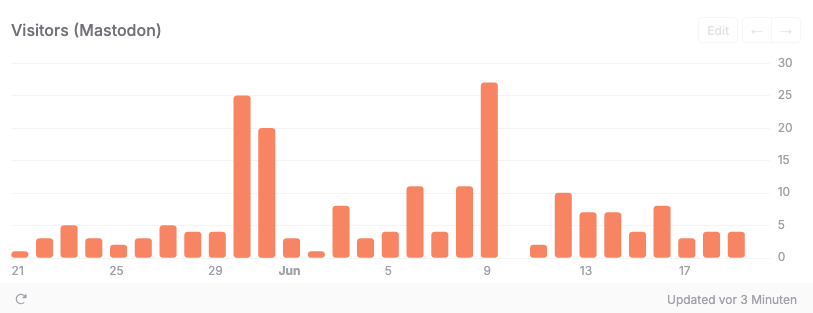
Today, in June 2025, we have just over 800 followers on Mastodon – the best community you could imagine! 😘
Twitter: The necessary evil
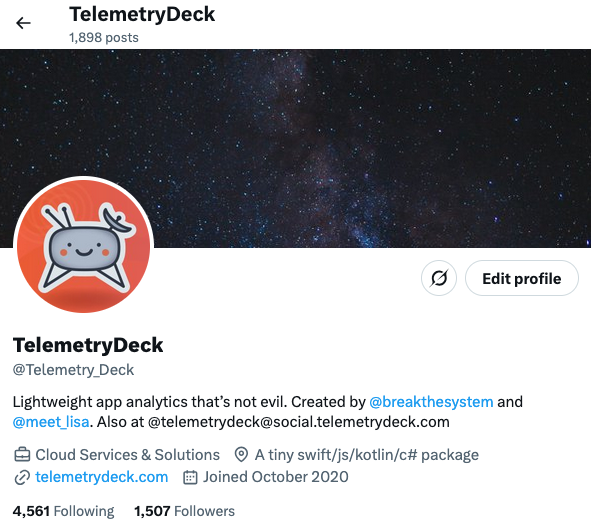
Ah, Twitter. We’d love to leave it behind for moral reasons, but here’s the thing: It’s still a hub for developers, and developers are our core audience. Lately, we’ve noticed that it’s getting more volatile, with a much rougher atmosphere. We see more angry comments than ever before, but the fact remains: the traffic keeps coming. Even if the platform is a little more… unfiltered now, it's hard to ignore that Twitter still plays a significant role in driving traffic.
Whether it's the most constructive place to be? That's another matter.
We stand for anti-fascism and are always on the side of the oppressed, the diverse, the minorities, and they are treated really badly on “the new Twitter.” Every month, we discuss withdrawing from this network. But the most important influencers from our target group are still there. What a shitty situation. Honestly!
We removed all Links to Twitter (let us know if we missed one) and try to navigate the situation. At the moment, we are more or less half-heartedly publishing the same content that we post on other networks. It lacks authenticity. And our followers are certainly noticing that too. 🫤
Bluesky: The promising quiet corner
Bluesky, while still growing, has yet to live up to its potential for us. The network feels a bit empty for now, but we think it’s worth supporting. Who knows? In the long run, it might become the next big thing. For now, we’ll continue to post all our content here too and keep an eye on how it evolves.
I, Lisa, have grown very fond of Bluesky. My timeline isn't full enough yet for me to read it as a regular pastime, but I check in every day. I wonder where the new followers come from, because I don't post that much. But when I feel like making a short statement, I usually post it on Bluesky. My favorite Bluesky account is that of my great role model 🦋Meredith Whittaker, president of the Signal Messenger.
LinkedIn: Lisa's playground
If LinkedIn is a playground, then it’s mine. Unlike the other platforms, LinkedIn is where I focus on engaging with our business audience, particularly in Germany.
Visit Lisas LinkedIn Profile here
Here, I share a mix of professional insights and personal stories to create a balanced feed. I rely on selfies and visuals (amateurishly built with Canva) to maximize engagement, ensuring I get past the ever-demanding algorithm.
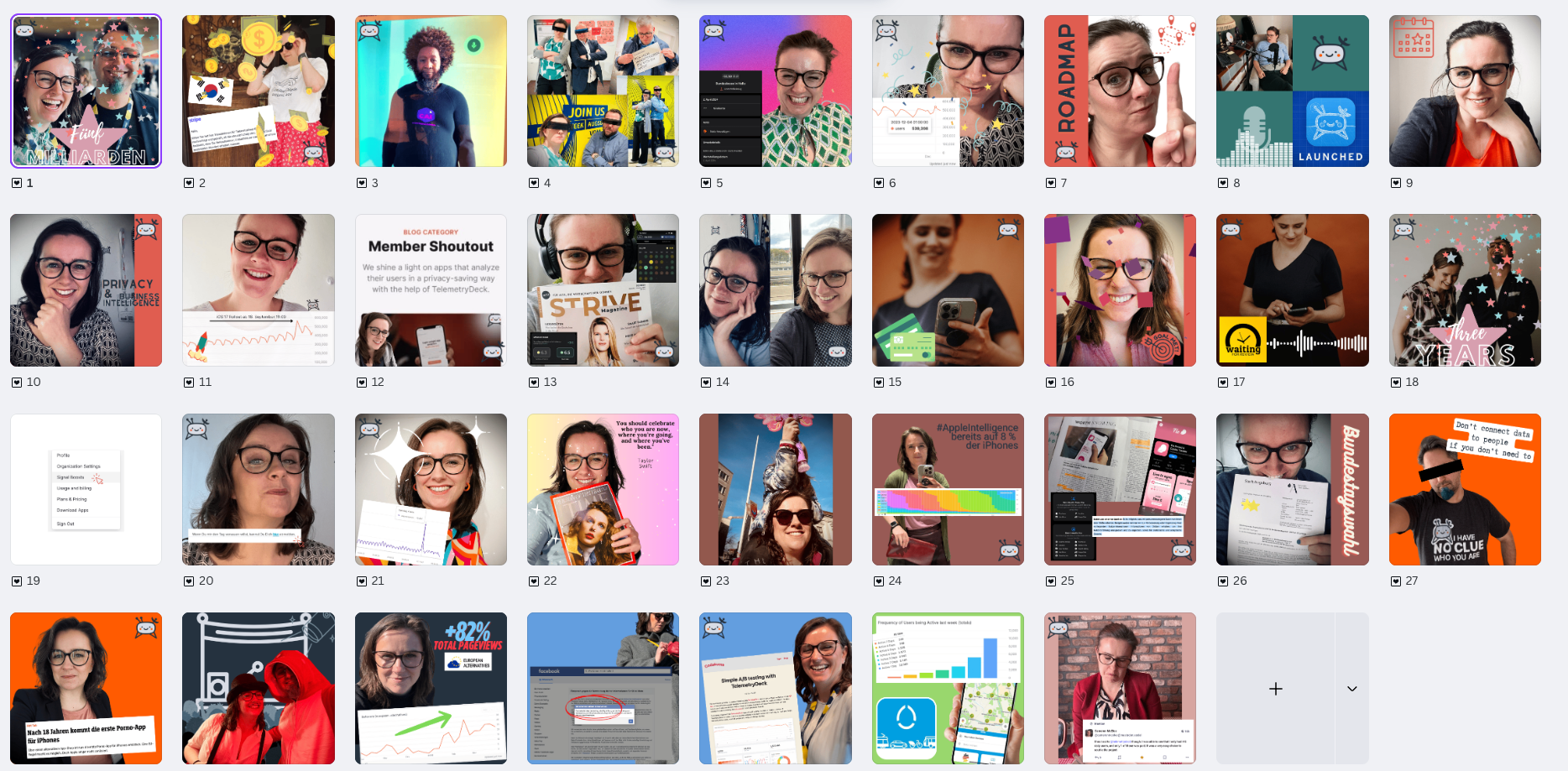
I usually draft my posts in bullet points, let ChatGPT do the heavy lifting, but there’s always a fair amount of tweaking afterward. It’s a bit of a dance: try to be personal without oversharing, but somehow I always get called authentic.
I know that many people dislike LinkedIn because they see numerous posts that address completely random topics from everyday life (I had a coffee on vacation) and then attempt to construct an adventurous business lesson (HOW TO ADJUST YOUR SALES STRATEGY!) from them. I see these posts too, but there are fewer of them because I curate my timeline and stop paying attention to people who post stupid things.
I am constantly testing different tools and strategies to use LinkedIn for lead generation, but I haven't really had any success with any of them yet. It's an exciting dance between annoying people, building a relationship with them, and marketing your own product. I keep getting offers from consultants, and sometimes I listen to them. But most of the time, it's crap.
What I do get from LinkedIn though is clout. I get invited to events a lot and people request me as a speaker. I am fully convinced, that the number of LinkedIn Followers plays a huge role in that.
I only post in German on LinkedIn because we want to target corporate customers in our region (Germany, Austria, and German-speaking Switzerland, called DACH).
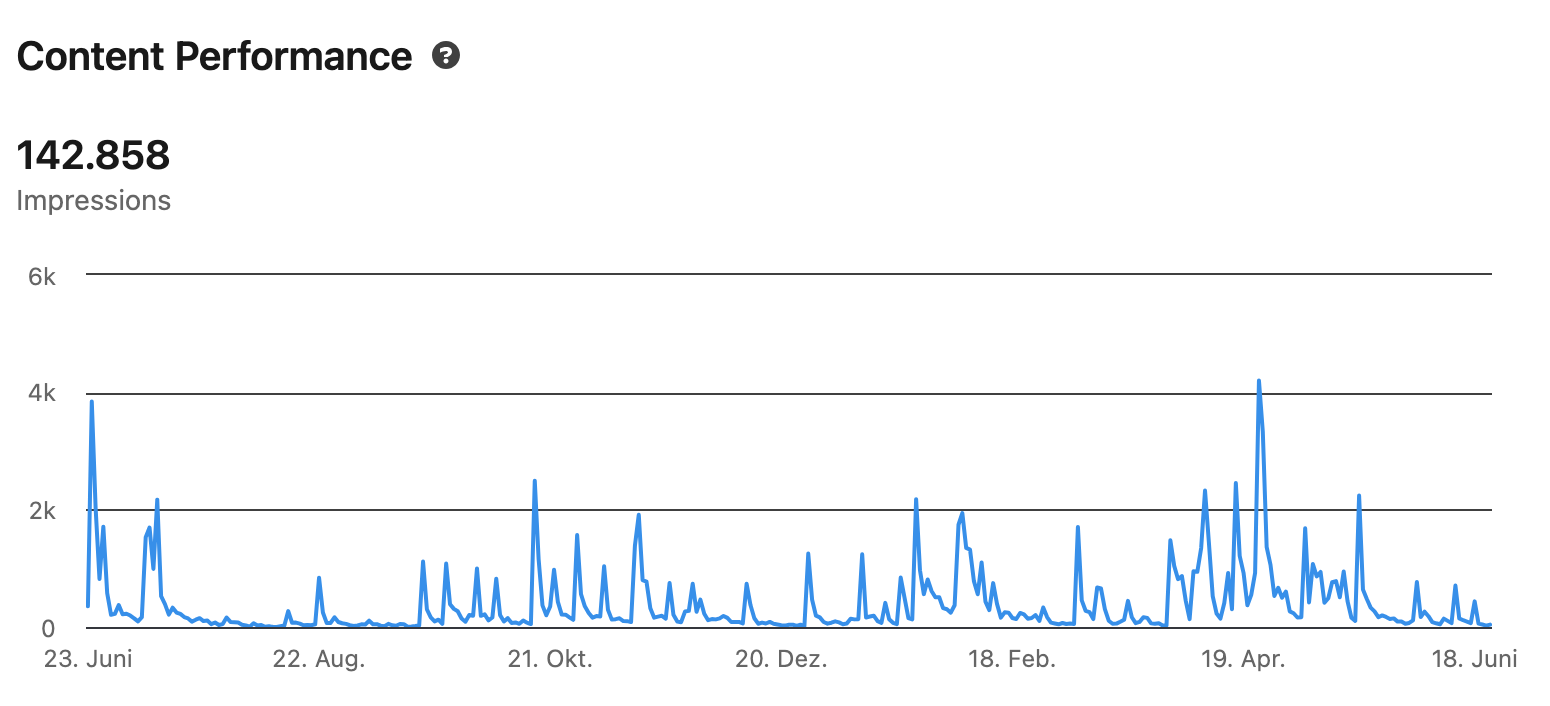
Incidentally, my most successful post from the past 12 months was about unwanted chatbots in meetings. This topic resonated with many people and generated quite a few comments. In addition, the opening sentence was so good that many people probably clicked on it to read the whole text. This is one of the user signals that the LinkedIn algorithm rewards highly. The year before, I had the widest reach with a post about finally paying off the debt I owed to the government because I had financed my studies, and the year before that, it was a post about my husband looking for a new job – which he then found through the network.
By the way, we also have a company profile on LinkedIn, but that hardly plays a role for the algorithm and our reach. LinkedIn loves personalities.
Instagram & TikTok: Video, but not enough
We’re also on Instagram and TikTok, where we post the same videos. We’ve never really committed to these platforms enough to see a consistent return, but occasionally, a random video can surprise us.
One iPhone unboxing video I did on a whim went viral on TikTok, with almost 300,000 views. Sounds great, right? Well, not so much. It didn’t bring us many new followers, and let’s be honest—people who love iPhones aren’t exactly our target audience.
We keep trying to be more active on these two video platforms, but so far we haven't been consistent enough to really make any progress. TikTok in particular keeps getting recommended to us. The argument is that everyone is on TikTok, so that's where you can reach people. Personally, I don't find that convincing. I stopped opening the app after a short time because I felt like the algorithm was frying my brain... I am super curious what our dear readers think about developer marketing on TikTok!
Reddit: Our secret weapon
Reddit, though, has been our secret weapon. We keep an eye on mentions of TelemetryDeck or conversations about app analytics through Redreach, a crawler I discovered via Twitter a while ago, and it’s paid off. I’m actively engaging with these threads, offering insights, answering questions, and providing help. The result? Steady traffic (Reddit is always in the top 10 referrers for our website), and more importantly, people who genuinely appreciate the value we offer.
Check out Redreach, I can highly recommend this tool!
YouTube: Will be revived soon
We have had a YouTube channel for a long time and have posted recordings of our webinars there, for example, and sometimes presented individual features. We have concrete plans to be more active here in the future. I don't want to give too much away yet, but it might be worth subscribing to our channel... 📺
Buffer: The unsung hero
After trying different scheduling tools, we decided to go with Buffer to manage posts across Twitter, Mastodon, and Bluesky. It helps us stay consistent and allows our team to collaborate on posts.
Buffer is also crucial for tracking links. We use tracking links to measure how well our posts perform across different networks. This helps us fine-tune our approach and optimize our strategy, ensuring we keep the momentum going. It also gives you some rough analytics for your post's performance on Twitter/X. Buffer also analyzes Facebook, Instagram, and LinkedIn but we did not connect these pages and we don't use Facebook at all.

Canva: Where authenticity wins over perfection
During the initial hype surrounding AI-generated images, I also experimented with it a bit and was promptly called back by Daniel. He suggested that I should continue to create my amateur graphics on Canva rather than constructing polished AI images for our posts. He believed it would be more authentic.
Since then, I have lost all sense of embarrassment and now play around with the color palette and fonts when creating my visuals. And somehow, that's exactly how I developed a style. But I'd like to take this opportunity to officially apologize to everyone who really knows anything about graphic design. I know I'm not good at it!
Please enjoy this view of my latest blog post header images:
We want to get better
I find it difficult to post authentically on social media as a company while also getting the most marketing reach out of the various platforms. As founders, it's easy to focus on the weaknesses of our product, especially when the to-do list feels endless. Every support ticket with criticism stings, and it’s hard to always shout about how fantastic TelemetryDeck is when we know there’s still work to do.
To stay positive and improve, we’ve adopted the following strategies:
- Amplifying Positive Feedback: Whenever we receive praise, we make sure to celebrate it. We thank our customers personally and share the good words in our team Slack, creating graphics to show our appreciation.
- Being Bolder and More Confident: We’re working on being more assertive, channeling that "tech founder" energy with a bit more swagger. After all, it's important to believe in the value we offer.
- Improving Our Social Media Presence: We're striving to show up authentically, even when we’re dealing with criticism or challenges. We aim for consistency and transparency in all our posts.
- Channeling Customer Insights: We value every piece of feedback—whether it's positive or constructive—and use it to improve our content, making it more aligned with what our audience cares about.
We know there's always room for improvement, and that’s exactly what we’re committed to—growing, learning, and adapting. That's why we're very interested in your feedback on our strategy and the various networks. As an app developer, do you find our posts appealing? What would you like to read from us? Write to me here.


